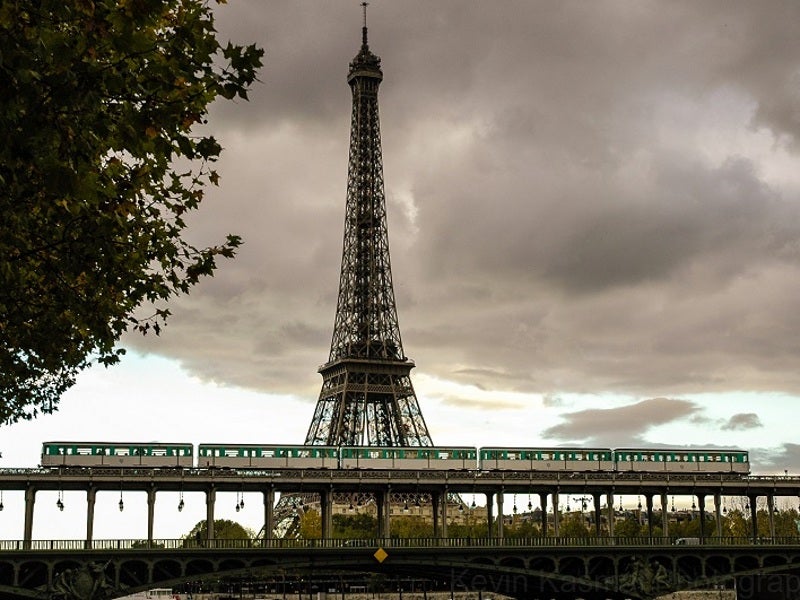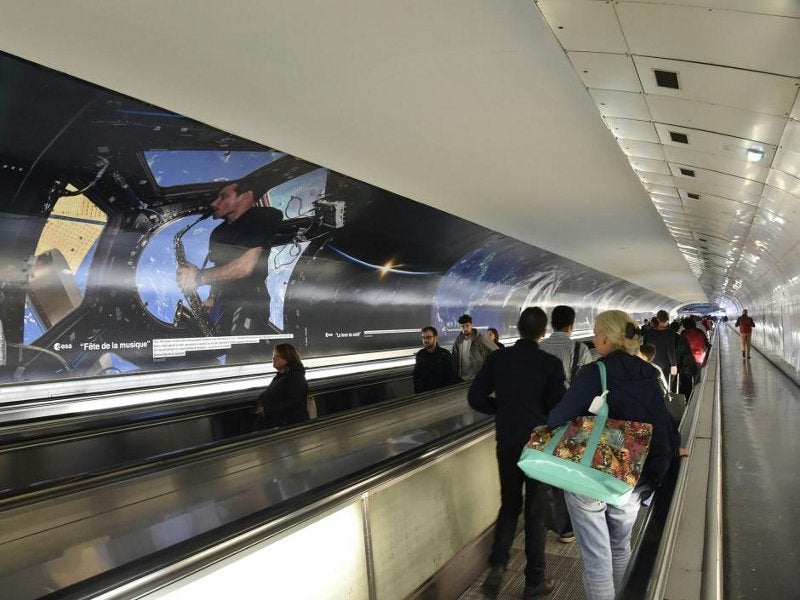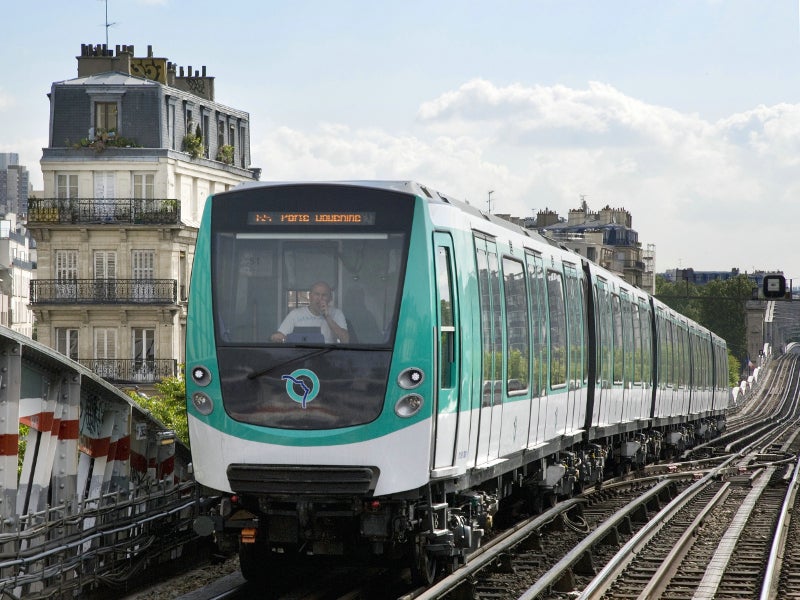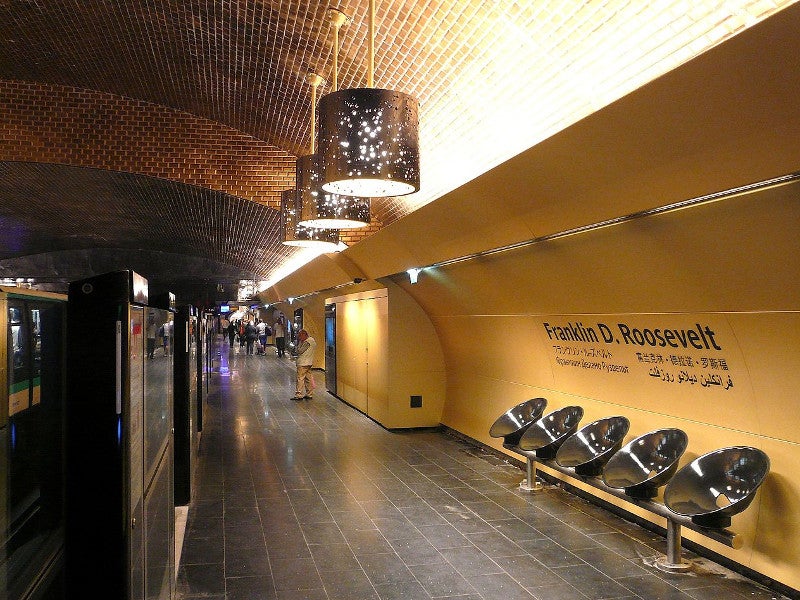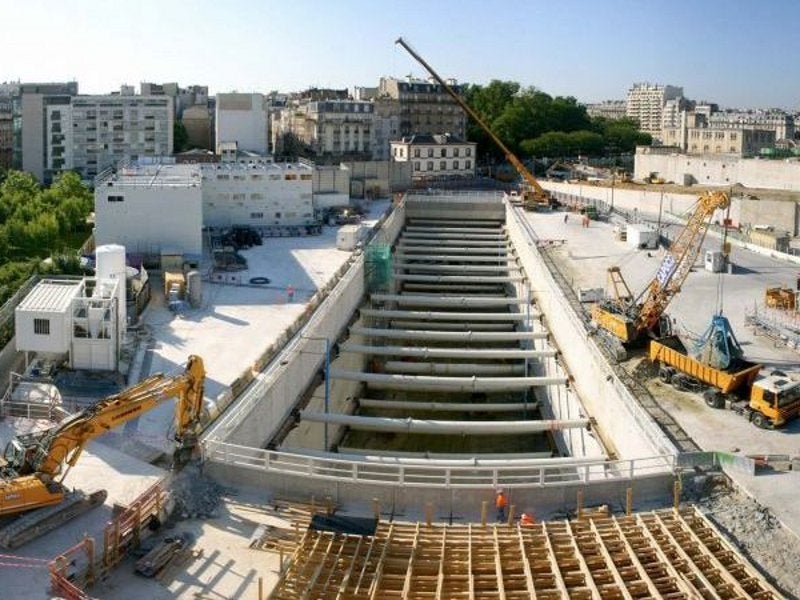Paris Metro (Metro de Paris) is a rapid transit metro system serving the capital city of Paris within Île-de-France. It is the second busiest metro system in Europe.
It is reputed as one of the best transport systems in terms of service density, frequency and safety. It has a daily ridership of approximately 7 million people.
Operated by Régie Autonome des Transports Parisiens (RATP), the metro is 214km-long and has 303 stations.
Paris Metro background
Renowned French civil engineer Fulgence Bienvenüe designed the Parisian Metro to serve the city’s traffic needs in April 1896. Compagnie de Chemin de Fer Metropolitan won the construction bid for the project in July 1897, competing with five bidders.
The construction began in November 1898. The first line of the metro, named Porte Maillot-Porte de Vincennes, was inaugurated on 19 July 1900. The proposed ten lines (corresponding to today’s lines 1 to 9) of the route were completed by 1920.
Société du chemin de fer électrique souterrain Nord-Sud de Paris (the Paris North-South Underground Electrical Railway Company) won a concession to build three lines in January 1904, which were completed by the 1930s.
Paris Metro lines and routes
Paris’s Metro currently serves 16 lines. Line 1 is a 16.5km stretch running from La Défense-Grande Arche to Château de Vincennes, with 25 stations in-between. In November 2011, a driverless, fully automated train was inaugurated on this line and the line was fully automated in December 2012.
Line 2 is a 12.4km semi-circular stretch between Porte Dauphine and Nation stations, with 32 intermediate stations.
Line 3 is an 11.7km stretch between Pont de Levallois-Bécon in the western suburbs to Gallieni in the east, with 25 stations between them. Line 3b is a 1.3km stretch between Gambetta and Porte des Lilas stations, with just four intermediate stations.
Line 4 is a 10.6km stretch between Porte de Clignancourt in the north and Porte d’Orléans in the south, running through 26 intermediate stations. It is planned for extension in two phases. The first phase includes the extension of line 4 southwards up to Mairie de Montrouge. Construction on the first phase began in 2008 and was completed in March 2013. The second phase includes an extension up to Bagneux. Construction of the second phase is expected to complete by 2022.
Line 5 is a 14.6km stretch between Place d’Italie and Bobigny-la Folie with 22 intermediate stations.
Line 6 is a 13.6km stretch between Charles de Gaulle-Étoile in the west and Nation in the east, comprising 28 intermediate stations.
Line 7 is a 22.4km stretch between La Courneuve-8 Mai 1945 in the north with Mairie d’Ivry and Villejuif-Louis Aragon in the south, with 38 intermediate stations. Line 7b is a 3.1km stretch between Louis Blanc and Pre Saint-Gervais, with only eight intermediate stations. Studies are underway to connect Line 3b with Line 7b, through an existing rail tunnel, and reopen a closed station, Haxo.
Line 8 is a 23.4km stretch between Balard and Pointe du Lac, with as many as 38 intermediate stations. It previously ran up to Créteil-Préfecture but was extended to Pointe du Lac in October 2011.
Line 9 is a 19.6 km stretch between Pont de Sèvres in Boulogne in the west and Montreuil in the east, with 33 intermediate stations. Line 10 is an 11.7km stretch between Boulogne-Pont de Saint Cloud metro station in Boulogne in the west and Gare d’Austerlitz, with 23 stations in between.
Line 11 is a 6.3km stretch between Mairie Les Lilas in the north-east of the city to Châtelet in the centre of Paris, with 13 stations.
Line 12 is a 13.9km stretch between Issy-les-Moulineaux in southern Paris to Porte de la Chapelle in the north, with 28 intermediate stations. The first extension phase of line 12 to Front Populaire was completed in 2012. The second phase includes the construction of Aimé Césaire and Mairie d’Aubervilliers stations and is expected to be completed by December 2021.
Line 13 is a 24.3km stretch between Chatillon-Montrouge in the south to Asnieres Gennevilliers Les Courtillies and Saint-Denis University in the north, comprising 32 intermediate stations. In June 2008, the north-west branch was extended to Les Courtilles from Gabriel Péri.
Line 14 is a 9km stretch between Saint Lazare and Olympiades, with nine intermediate stations.
Rolling stock
Paris Metro uses two types of rolling stock, MF (matériel fer) and MP (matériel pneu). The MF variant has steel wheels, whereas the MP variation uses rubber tyres.
RATP ordered 66 new MF01 train sets to replace some of the MF 67 fleet of Line 9.
The Alstom and Bombardier consortium received a contract to design and build 44 new generation trains for Île-de-France Mobilités and RATP, in November 2019. The contract also includes options for additional vehicles. The new fleet will enter service between 2024 and 2026.
Re-signalling programme of Paris Metro
RATP started a re-signalling programme on the Paris Metro. The programme was initially called Offre Urbaine Renouvelée et Améliorée Gérée par un Automatisme Nouveau (OURAGAN), which means a renewed, improved, automatically controlled urban offer but was later renamed as the OCTYS system.
The signalling system of the metro is based on OCTYS-CBTC (communications-based train control).
A $25.8m contract was awarded to Ansaldo STS for signalling system maintenance for every line along the Paris Metro, except the fully automatic Line 1.
Future extensions of Paris Metro
Line 1 will be extended by 7km from Château de Vincennes to Val de Fontenay underground, with three new stations. Expected to be completed by 2030, line 1 is expected to transport 110,000 passengers a day.
Scheduled to be completed by 2021, Line 4 extension will create a 1.8km stretch from Mairie de Montrouge to Bagneux with two new stations to serve 37,000 passengers.
The 6.5km extension of line 10 from Gare d’Austerlitz to Ivry-Gambetta will add five new stations. Line 10 will also be extended by 4km to the Les Ardoines station and is expected to serve up to 75,000 passengers when completed by 2030.
Line 11 will be extended by 6km to Rosny Bois-Perrier and then to Noisy-Champs with six new stations. The extension is expected to cater 85,000 passengers when completed in 2022.
Line 12 will be extended by 2.8km with two new stations between Front Populaire to Mairie d’Aubervilliers. It is expected to start operations in December 2021.
Line 14 involves a 5.8km extension from Saint-Lazare to Mairie de Saint-Ouen with four new stations and a 14km extension of M14 Olympiades to the Orly Airport with seven new stations. The extensions are expected to be completed in 2020 and 2024, respectively.
The existing M14 stations are being reconfigured in order to improve safety. Ticket and information hall of the Bercy station is being extended by 450m² and three additional access points are being created.
Contractors involved
Siemens supplied driverless operation equipment for Metro Lines 14 and 1, as well as equipped Lines 3, 5 and 9 with signalling systems.
RAPT contracted Siemens for signalling and operations control systems to 27 stations of Line 4. The automatic operation systems can enhance the capability of Line 4 by 20%.
Siemens also delivered Trainguard MT automatic train control system for automatic and driverless operation. Train movements are monitored via the operation control centre, which was also supplied by Siemens.
RATP selected a consortium led by Eiffage Public Works to build the Line 14 extension in March 2014. The project involves the construction of a 3,600m tunnel between Saint-Lazare and Porte de Clichy, as well as two new stations at Pont Cardinet and Porte de Clichy.
Alstom was contracted to supply metros trains for lines 1, 4, 6, 11 and 14 of the Paris Metro and the Grand Paris. Worth more than €2bn, the contract covers the supply of 217 MP14 trains for a period of 15 years.
Salini Impregilo received a €203m ($251.3m) contract for the extension of Paris Metro line to the Orly airport in March 2018. Alstom was contracted for providing automatic train operation system I-CBTC to line 6.
SYSTRA received a contract for the extension of Line 14 to Mairie de Saint-Ouen. IVS France is responsible for installing and managing vending machines in the Paris Metro.

